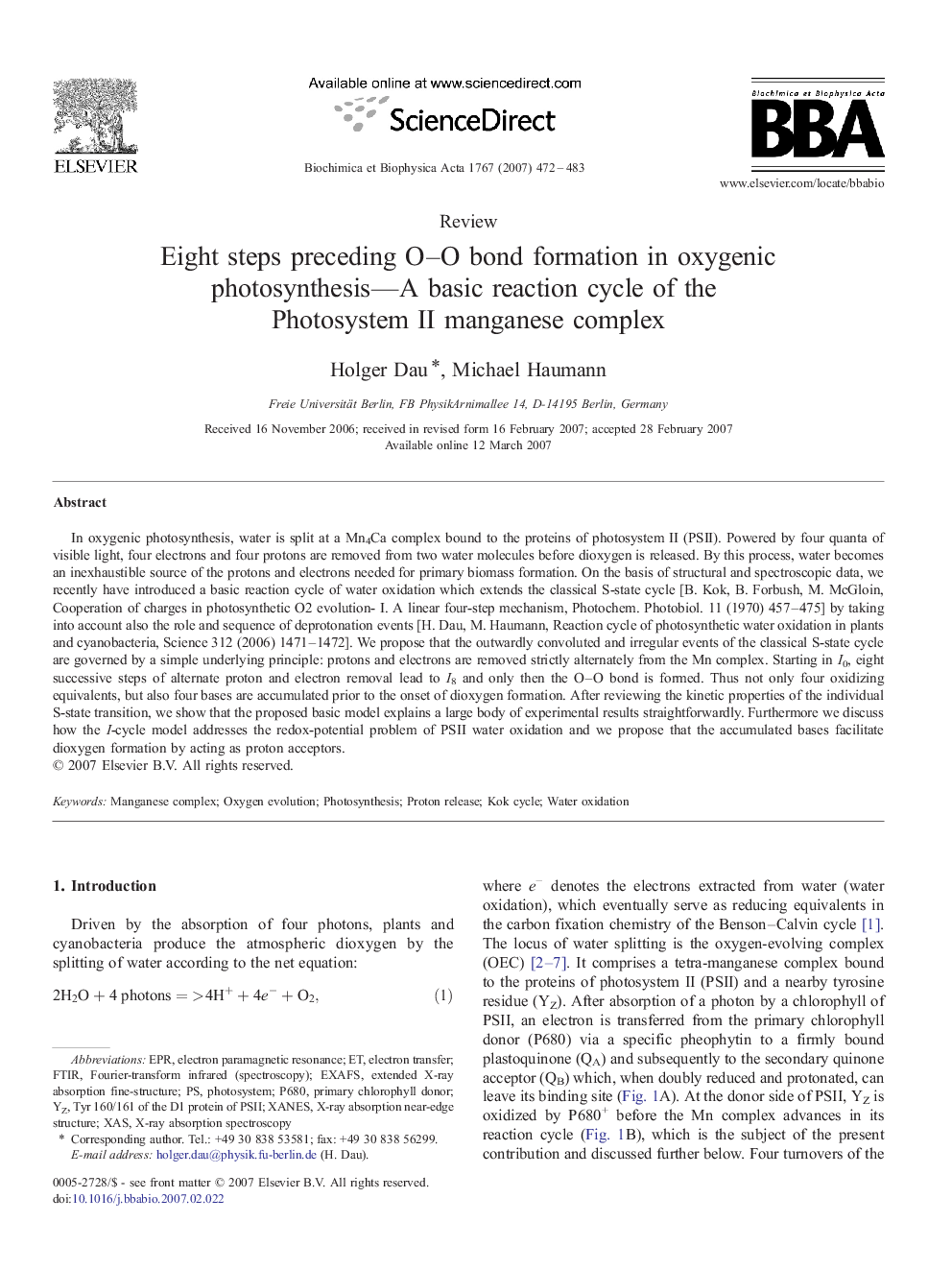| Article ID | Journal | Published Year | Pages | File Type |
|---|---|---|---|---|
| 1943548 | Biochimica et Biophysica Acta (BBA) - Bioenergetics | 2007 | 12 Pages |
In oxygenic photosynthesis, water is split at a Mn4Ca complex bound to the proteins of photosystem II (PSII). Powered by four quanta of visible light, four electrons and four protons are removed from two water molecules before dioxygen is released. By this process, water becomes an inexhaustible source of the protons and electrons needed for primary biomass formation. On the basis of structural and spectroscopic data, we recently have introduced a basic reaction cycle of water oxidation which extends the classical S-state cycle [B. Kok, B. Forbush, M. McGloin, Cooperation of charges in photosynthetic O2 evolution- I. A linear four-step mechanism, Photochem. Photobiol. 11 (1970) 457–475] by taking into account also the role and sequence of deprotonation events [H. Dau, M. Haumann, Reaction cycle of photosynthetic water oxidation in plants and cyanobacteria, Science 312 (2006) 1471–1472]. We propose that the outwardly convoluted and irregular events of the classical S-state cycle are governed by a simple underlying principle: protons and electrons are removed strictly alternately from the Mn complex. Starting in I0, eight successive steps of alternate proton and electron removal lead to I8 and only then the O–O bond is formed. Thus not only four oxidizing equivalents, but also four bases are accumulated prior to the onset of dioxygen formation. After reviewing the kinetic properties of the individual S-state transition, we show that the proposed basic model explains a large body of experimental results straightforwardly. Furthermore we discuss how the I-cycle model addresses the redox-potential problem of PSII water oxidation and we propose that the accumulated bases facilitate dioxygen formation by acting as proton acceptors.
